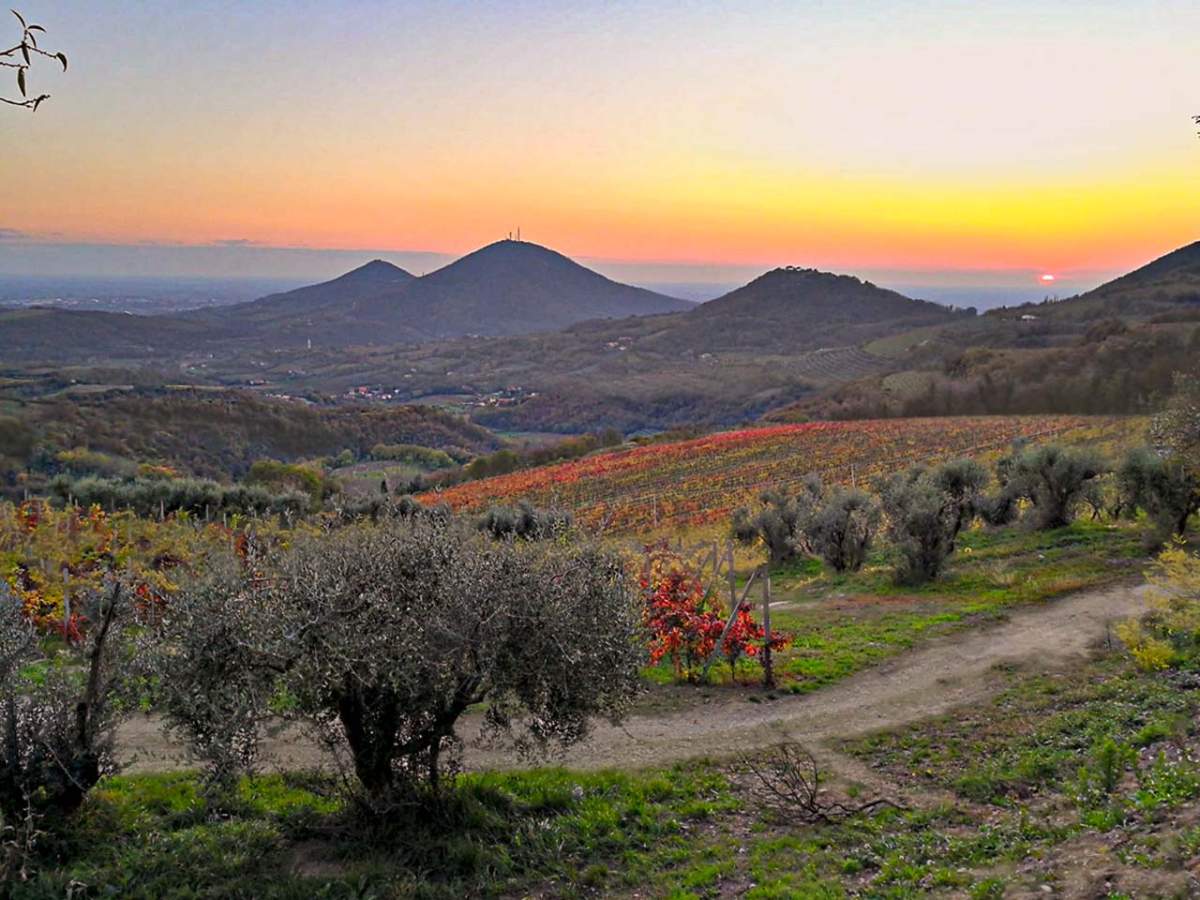The territory of Padua owns an extrordinary artistic, cultural and natural heritage, which includes the Thermal Park of the Euganean Hills.

The territory of Padua owns an extrordinary artistic, cultural and natural heritage. The natural excellence is represented by the Euganean Hills, important point of interest for ist high variety of stones and the rich flora including more than 1400 botanical species, that is approximately one-sixth of Italy’s flora. These gentle hills, emerged from the bottom of the Tetide sea after complex volcanic phenomena occurred more or less 35 millions of years ago, reach a maximum height of 600 metres and include a rich architectonic and monumental heritage and wonderful wide vineyards and olive-groves, which excellent Doc wines and delicate oils are produced from. The Euganean Hills are covered with villas and castles, ancient and quiet monasteries, rural villages and charming towns, such as Arquà Petrarca, chosen by the poeta s his last residence. All over the territory it is possible to find medieval marks: the walls of the cities of Monselice, Este and Montagnana which protected the area, and the impressive castles of Ca’ Marcello in Monselice, S. Pelagio in Due Carrare (now hosting the Museum of the Air), the Catajo in Battaglia Terme, S. Martino in Cercarese Santa Croce and The Castele of Valbona in Lozzo Atestino. Among the historical gardens, the Babarigo Pizzoni Ardemani Garden must be mentioned, one of the most important in all Europe. There are also ancient and valuable abbeys: Praglia’s Abbey is perfectly preserved and is still inhabited by Benedictine monks, who personally direct a centre for the restoration of books, which is famous all over the world; The Abbey of Carceri has been affected by many misfortunes over the centuries, but now it looks grand thanks to its historical and artistic aspects; the abbey church of S. Stefano, including mosaic floors of the X and XIII century and the tomb of Marsilio da Carrara. The Hills also offer many well-signalled paths through the gentle slopes oh the territory, which allow to admire the typical alternation of species of the cold alpine climate in the northern area, such as secular chestnut groves, hornbeams, oaks, maples, beech trees and blueberries, laburnum, to species typical of the mediterranean climate in the southern one, like holm oaks, arbutus, brooms and prickly cactus-like trees.
The Hills also surround the Euganean Thermae, the most important thermal area of all Europe, thanks to its unique source, its water containing sodium, bromine and iodine, which emerges at a temperature of 87°C approximately. More than 100 hotels welcome the tourists offering a stay of wellness and relax, thanks to their beautiful indoor and outdoor thermal pools, modern gMore than 100 hotels welcome the tourists offering a stay of wellness and relax, thanks to their beautiful indoor and outdoor thermal pools, their modern gyms and centres for mud therapies, inhalations, massages and beauty and remise-en-forme treatments.
What mostly enriches the territory of Padua from an architectonic point of view are above all the wonderful villas, which appeared especially during the ‘500 and ‘600, designed by major architects as Palladio, Sansovino and Falconetto. The northern part of the territory includes Cittadella, a unique town surrounded by a medieval wall, projected as elliptic lowland town. This area also shows some of most beautiful villas of Padua: Villa Contarini in Piazzola sul Brenta, a true royal palace, sumptuously decorated, with a wide park; Villa Marcello in Levada, still residence of the descendants of Andrea Marcello, who had it built in the early ‘500; Villa Cornaro in Piombino Dese, one of Palladio’s masterpieces which are still perfectly preserved.
A tourist itinerary that cant’ absolutely be missed is the cruise on the Brenta, where visitors can see the many charming villas that enrich the banks of the famous channel connecting Padua to Venice. The lovers of rural environments and ancient traditions will be amazed by the Saccistica, that is the easten part of the territory of Padua, bordering on the venetian lagoon; this is the ideal location to discover the ancient rural roots of the Venetians and their cultural traditions that, for many reasons, survive here in the farms, in the big country houses, in the parish churches and in the typical patronal celebrations. This area also shows Valle Millecampi, a lagoon zone rich in flora and fauna typical of the lagoon environment.